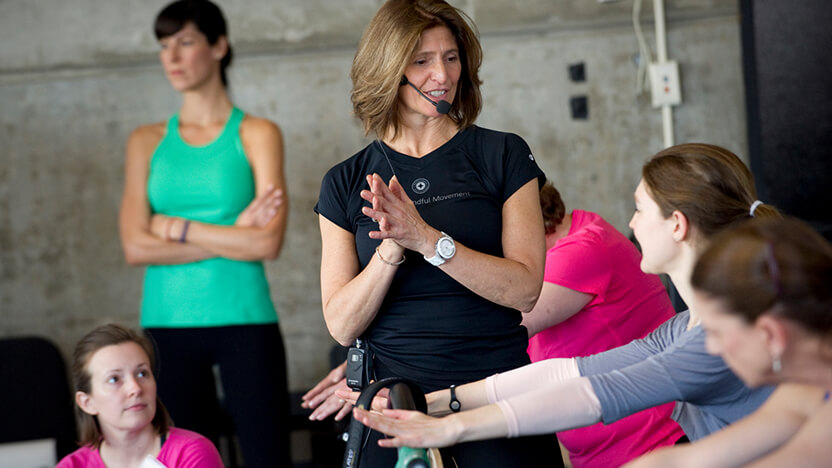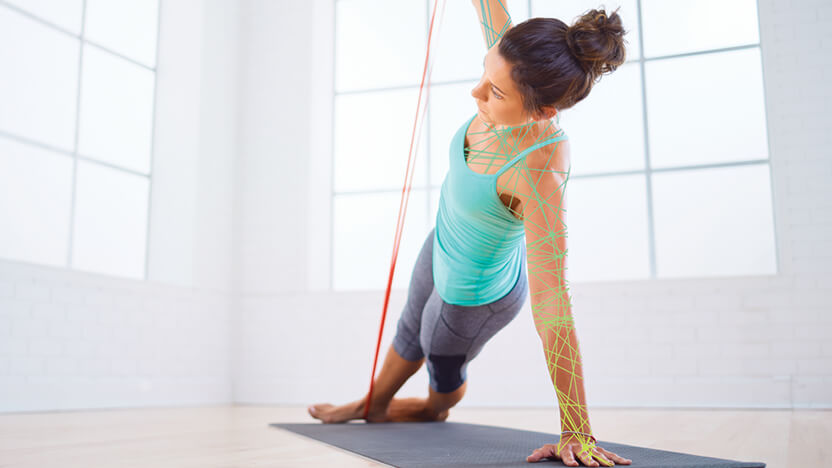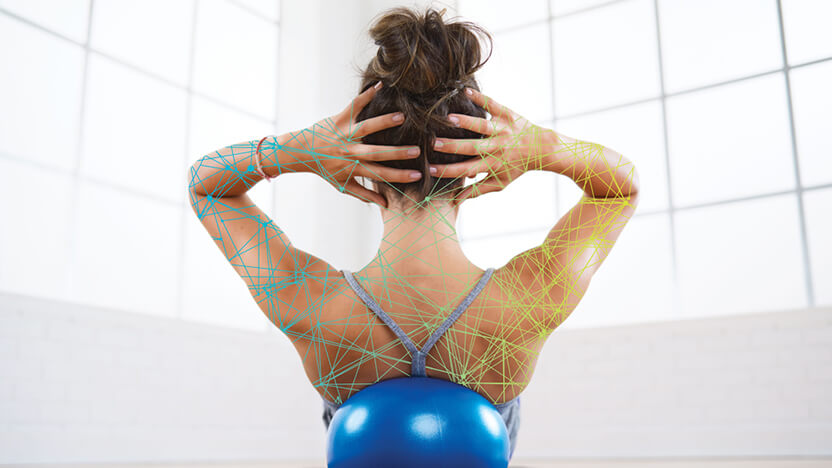
Adding Merrithew® Fascial Movement Training to your toolkit can greatly complement your STOTT PILATES® programming. Our Merrithew Instructor Trainers explain that Fascial Movement offers options for safe and effective warm ups to prime the body and muscles for dynamic, loaded movements, and supports the prevention of injury.

For example, if you’ve planned a workout that incorporates STOTT PILATES with the Cardio-Tramp®, Jumpboard or other athletic conditioning movements on a Reformer, mat and Arc Barrel, warming up your clients with fascially-focused movement can ensure muscles are prepared for more intense activities.
Merrithew Lead Instructor Trainer Monique Lavoie notes you can incorporate props like the Mini Stability Ball™ to foster rhythmic qualities in the body and improve mobility. Here’s an example of one of the exercise series she will often teach as a warm-up:
- Starting on your back, Leg Slide with blue Mini Stability Ball under right foot
- Hip release with blue Mini Stability Ball under right foot
- Leg Bouncing, blue or orange Mini Stability Ball under lower leg
- Side-lying, Leg Bouncing with blue or orange Mini Stability Ball under top leg
- Side-lying Spinal Rotation with orange Mini Stability Ball under forearm
- Side-lying Arm bounce with blue Mini Stability Ball under forearm
- Repeat all exercises on the other side

Merrithew Lead Instructor Trainer Jennifer Dahl adds that variation is important with Fascial Movement, and that you should work to “optimize the adaptive qualities of the fascial system by choosing a series of movements that vary in amplitude and direction.”
“Fascial Movement allows for a dynamic warm up throughout the whole body, but you can target specific areas to ensure balance or refine movement quality in a particular direction depending on the client,” she said. “It also plays a crucial role in injury prevention because it promotes efficient load transfer, making most other exercises safer, adaptable and functional.”
You can learn more about Fascial Movement education here